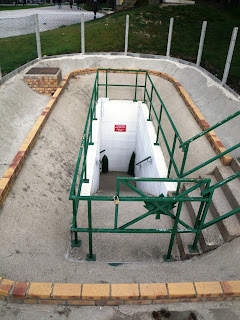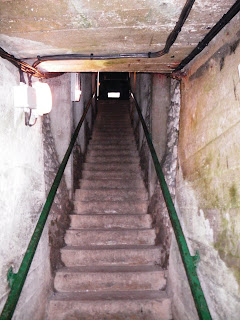The inscription reads,
3rd Canadian Division
To the Glory of God and in everlasting memory of our gallant comrades
who gave their lives in the defence of the line from October 23rd
to February 15th 1917 and in the attack and capture of Vimy Ridge
on April 8th 1917 and in the subsequent operations.
I could find no information concerning this cross of remembrance and can only assume it was raised by surviving members of the 3rd division.
Canadian Cemetery No. 2, one of two cemeteries at the site.
The Canadian cemetery is a burial ground for commonwealth soldiers killed in the First World War. It was originally named CD5 and was a battlefield cemetery for soldiers of the Fourth Canadian Division killed in the battle of Vimy Ridge.
In 1919 similar battlefield cemeteries were cleared and the remains interred here. It was reopened in 1931 and received the last burial in 1931. The cemetery now contains the graves of 2,965 Commonwealth soldiers.
So many headstones are as the one below, the actual remains are elsewhere.
The weather was a little different than our previous visit, cold and damp.
Part of the underground tunnels have been preserved and are open to the public,
The view from the bottom of the stairs.
It was interesting to see that the green mold only grew around the lights.
Coming up to a pumping station set into the side of the tunnel.The pumps were run continually as flooding would occur without the pumps. Some deaths occurred in the tunnels due to the empty gas cans being used for drinking water. Our guide pointed out that the atmosphere in the tunnels would be fetid and soldiers would consume the gas without smelling or tasting it.
I cannot imagine spending months in these tunnels with little to do, waiting for the order for the attack to go forward.
Areas of the tunnels were shut off from the public due to dangerous conditions. The soldiers were fortunate in this area to be digging in chalk, no reinforcement was required to shore up the tunnels.
In other areas the tunnels had to be dug through clay, which required the tunnels to be completely planked with wood, roof and walls. Timber precut to the required dimensions was supplied from as far away as Ottawa, Ontario.
We only spent 30 minutes below ground but it was enough for me; one reason being that I was continually bumping my head on cross beams. Tunnels and trenches were dug just deep enough for the average height of a soldier at the turn of the century, 5'6". Life expectancy for taller soldiers was far shorter, especially in the trenches where German snipers were constantly looking for targets.
If you look closely you will see the Vimy memorial in the distance. Our last view after a memorable trip to France and Belgium.
And my last view of Europe as we made out way home. I enjoyed watching the seagulls hitch a ride from Dunkirk to Dover. They remained in the slip stream of the ferry, not having to beat their wings, just gliding along.

















No comments:
Post a Comment